Skin redness isn’t always a big deal, and sometimes the problem will go away on its own or with simple at-home measures. Other times it can be a sign of something more serious, like an infection or a chronic skin condition, that calls for medical treatment.
But how can you figure out exactly what you’re dealing with? Since redness usually comes along with other symptoms, take note of anything else that’s going on with your skin.
A doctor can give you a proper diagnosis and treatment plan. But while you wait, here are 11 common causes of skin redness, what they look and feel like, and how to solve or manage the problem, if that’s possible.
Skin redness can be caused by a ton of different things. This list isn’t exhaustive, but it covers some of the most typical reasons your skin might be red. Only a medical professional can identify the cause for sure.
1. Contact dermatitis
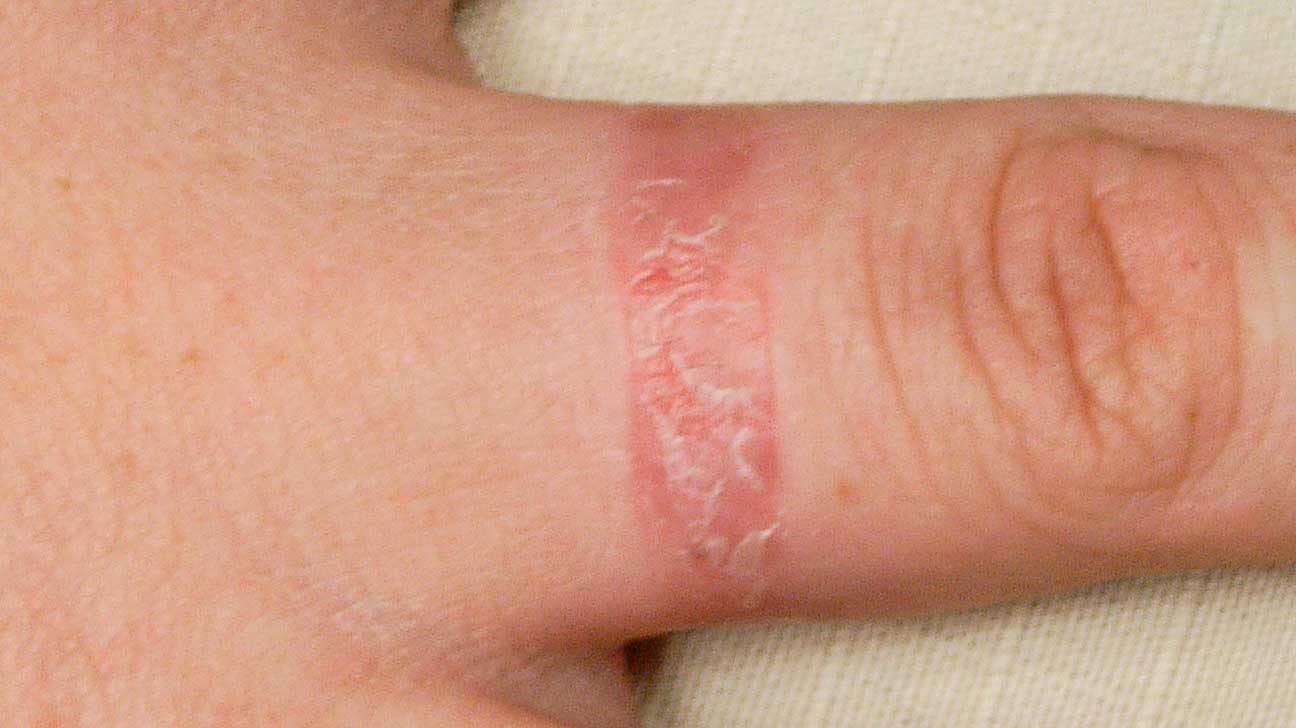
What it is
Contact dermatitis is a red, itchy rash that forms when your skin comes in direct contact with an irritating substance or an allergen.
When the rash is caused by an irritating substance, like a harsh soap or bleach, it’s called irritant contact dermatitis. When it’s caused by an allergen, like nickel in jewelry or poison ivy, it’s called allergic contact dermatitis.
Symptoms
Allergic contact dermatitis and irritant contact dermatitis have similar symptoms, including redness and itchiness that could be accompanied by swelling, dryness, burning, sensitivity, or blistering.
The symptoms can come on quickly after your skin touches the substance, but allergic contact dermatitis can take up to a few days to show up.
Irritant contact dermatitis may appear only after repeated exposure to the irritant (such as washing your hands a bunch of times).
How to treat it
Ditching the offending substance should help your skin clear up, but it might take a few weeks. You can speed things along (and ease discomfort) by applying a thick layer of petroleum jelly over the rash, which acts as a barrier and keeps things from getting dry.
An over-the-counter (OTC) — or, better yet, prescription-strength! — corticosteroid cream or ointment can also speed healing if the irritant is removed. Oral antihistamines may fight itching, but they won’t help with the rash.
2. Burns
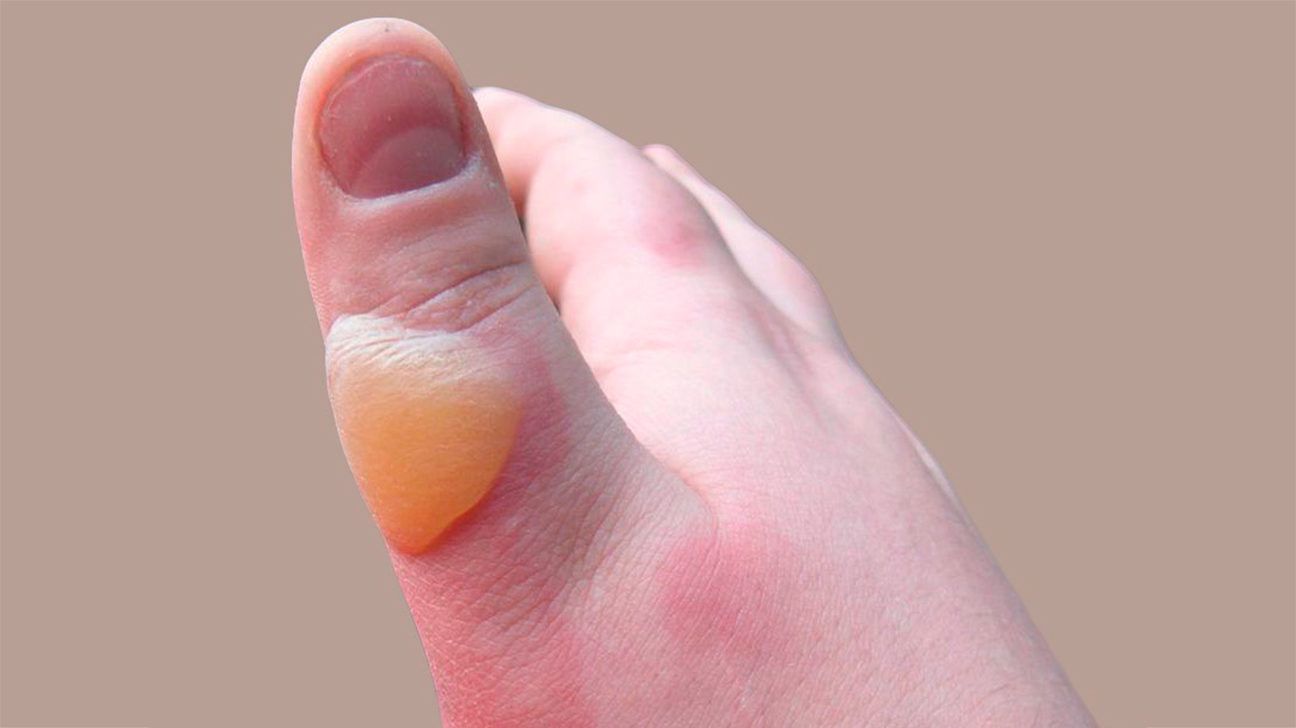
What it is
Burns are damage to skin tissue caused by exposure to heat, radiation, electrical contact, or chemicals.
Superficial and some partial-thickness burns are relatively easy to treat and will generally heal within a few weeks, but full-thickness burns are more serious because they can affect the nerves and other tissues underneath.
Symptoms
Superficial burns are red and might be swollen or painful. As they heal, they might get dry or peel.
Partial-thickness burns are more painful and tend to blister. When the blisters pop open, the burns typically look wet or weepy.
Full-thickness burns are different: These severe burns cause skin to turn waxy, charred, white or dark brown, and leathery. If a burn has caused nerve damage, it may not be painful.
How to treat it
It depends on the cause of the burn and how severe it is.
You can treat many superficial and mild partial-thickness burns at home by running your skin under cool water, applying lidocaine or aloe vera gel to the affected area, and wrapping it loosely in gauze. (Never use cotton balls on burns.)
Seek medical attention ASAP for burns that cover your face, hands, feet, buttocks, or groin or if you’re not sure how severe your burn is.
The same goes for more serious burns that look charred, white, leathery, brown, or black; burns caused by chemicals or electricity; or burns that cause trouble breathing.
3. Sunburn
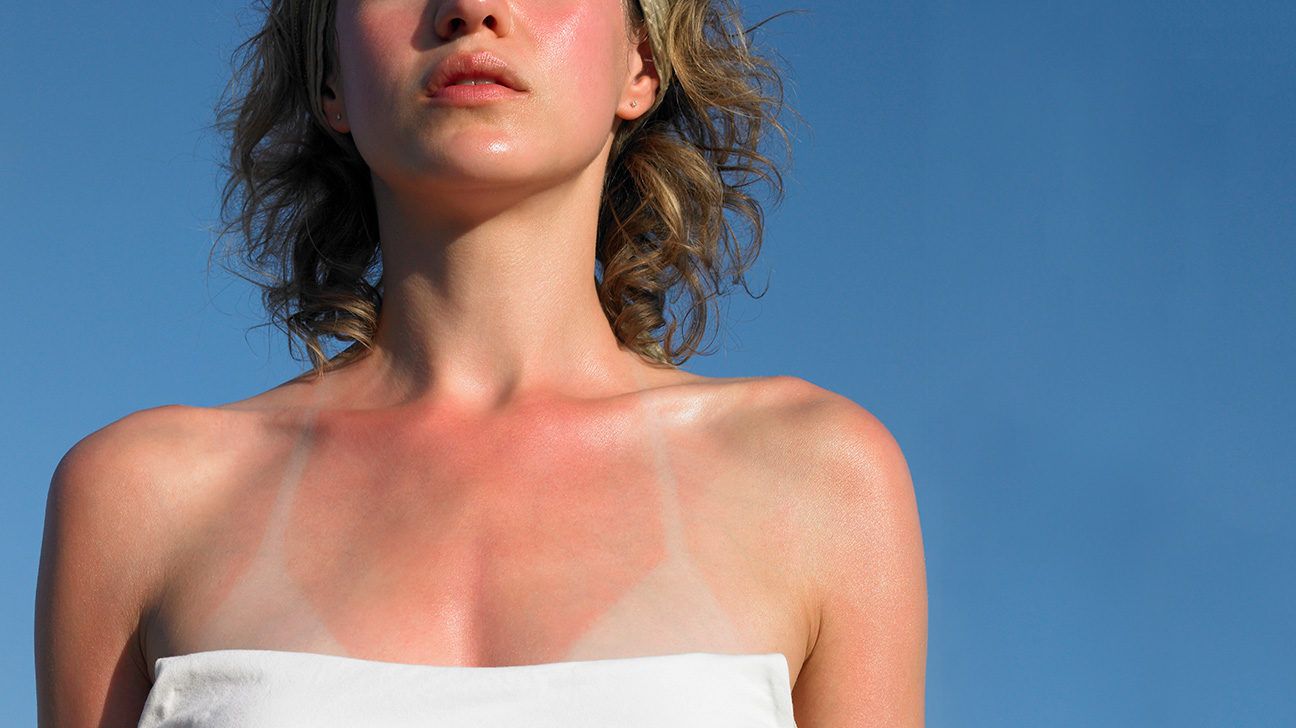
What it is
Sunburn is damage to skin tissue caused by overexposure to the sun’s harmful UV rays, which results in painful redness. Most people associate sunburns with hot, sunny days, but it’s possible to get one when it’s cool or cloudy too.
Symptoms
Mild sunburns tend to be pink or red, tender to the touch, and a little itchy. After a few days, the affected skin will start to peel or flake.
More severe sunburns can also leave skin swollen or blistered and potentially give you a headache or nausea.
How to treat it
Cool the affected skin by applying cool compresses or taking a cool bath, and ease itching with aloe vera gel or calamine lotion. For more serious pain and swelling, take an OTC pain reliever like ibuprofen or naproxen sodium.
Drink plenty of water to help your skin rehydrate, and don’t even think about going back out into the sun until you’re fully healed.
Use sunscreen every day (reapplying every 2 hours, or every 60 to 80 minutes when getting wet) to prevent this pain in the future.
4. Hives/urticaria
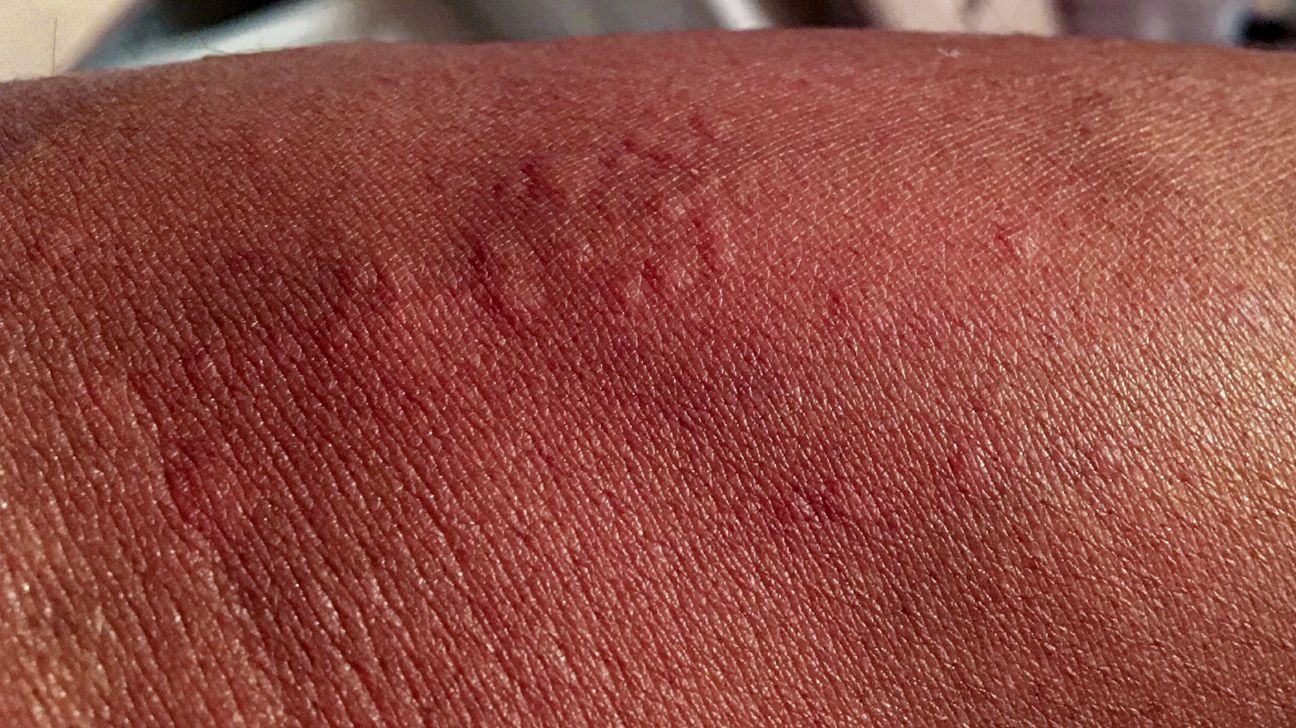
What they are
Hives (often called welts) can appear in many areas on the body and are very itchy.
In most people, the cause is never found and the hives go away within 6 weeks. In some cases a clear cause, such as a medication or a recent viral illness, can be found.
Symptoms
Hives are very itchy, red, swollen bumps on the body. They often go away on their own within 24 hours, but new ones can appear in a nearby area.
How to treat them
If your hives are the result of a medication, stop the medication and contact your doctor. If you notice any swelling on your face or have trouble breathing, seek immediate medical attention.
Otherwise, hives may go away on their own with time and the use of an oral antihistamine like Zyrtec. But it’s important to see a doctor or dermatologist for appropriate diagnosis and guidance on treatment.
5. Infection
What it is
A skin infection can be caused by bacteria, a virus, fungi, or (in rare cases) parasites. An infection can often develop from open wounds or sores, especially ones that aren’t kept clean.
Symptoms
Mild skin infections cause redness, swelling, and tenderness or pain. More serious ones might also blister or ooze pus.
How to treat it
It depends on the type of infection you have, but you’ll generally need to see a doctor to make sure oral antibiotics aren’t necessary.
Your doc may recommend at-home treatments, such as topical creams and ointments (like an antibiotic or antifungal cream) and cool compresses. These can help speed up healing and ease the pain or tenderness.
Have your doctor look at the infection to determine the best treatment. It’s best not to try to treat this on your own. OTC topical antibiotics can cause allergic contact dermatitis.
6. Insect bite or sting
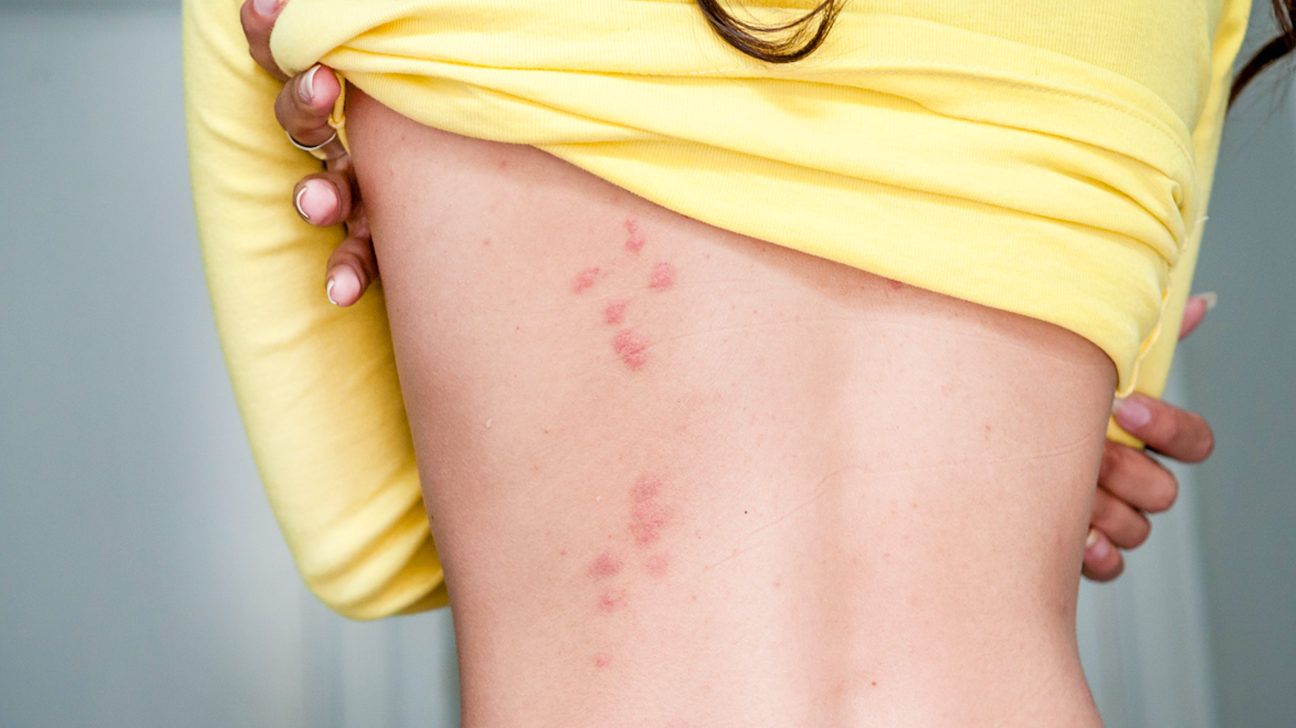
What it is
Bees, ticks, ants, fleas, flies, mosquitoes, wasps, bedbugs, and more can all bite or sting — and leave big, red welts. These bites or stings can be annoying and uncomfortable, but they’re rarely dangerous.
Symptoms
You might see the insect biting or stinging you, or you might not notice until later. Either way, it’ll usually cause a red rash that’s swollen, painful, or itchy.
Often these can look like red, juicy bumps. They can resemble hives in some cases or blisters in others. Some bites or stings might also cause numbness or pain in nearby muscles.
In rare cases, people who are allergic might experience a severe reaction like trouble breathing or even anaphylaxis — a life threatening reaction that has a variety of symptoms, such as skin rash, nausea, vomiting, difficulty breathing, and shock.
How to treat it
You can manage mild bites and stings at home. Remove the stinger if it’s still there, wash the area with a mild soap and warm water, and apply an ice pack to keep the swelling down.
If you’re still uncomfortable, try OTC hydrocortisone, an oral antihistamine, or an OTC pain reliever like ibuprofen. If your reaction is severe — such as if you start to have trouble breathing — call 911 immediately.
7. Heat rash
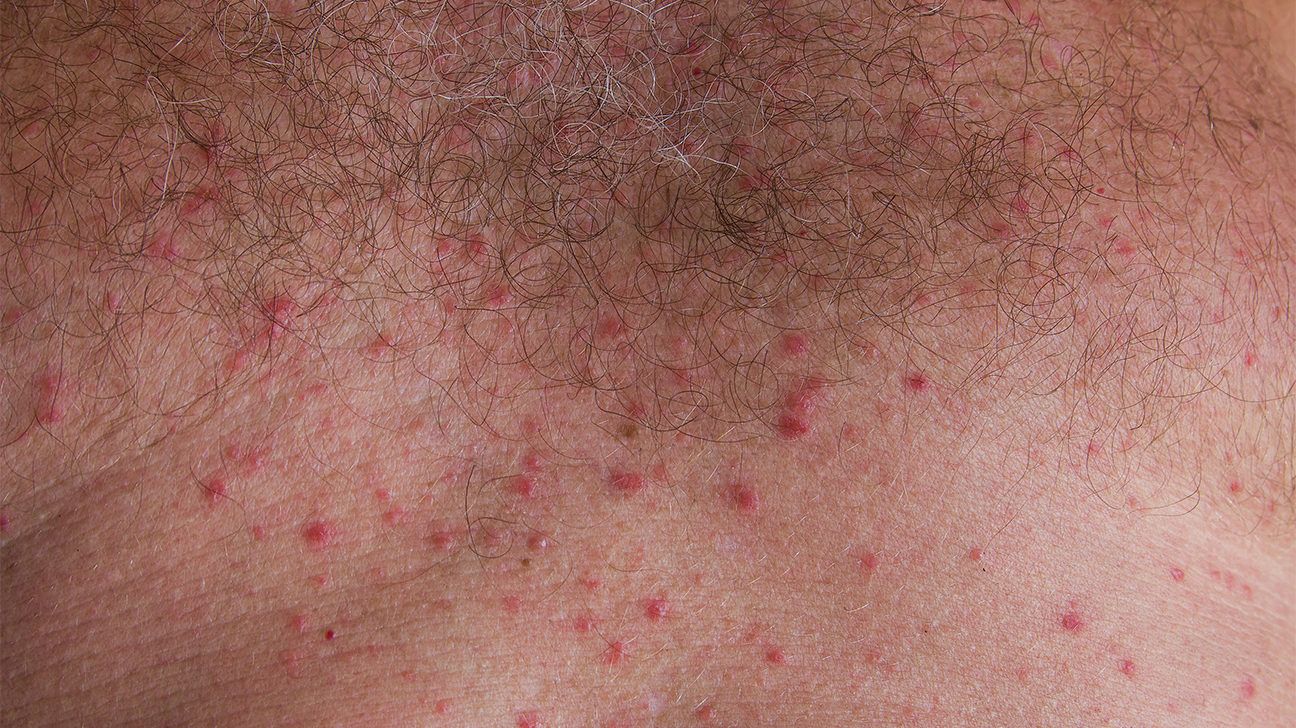
What it is
Heat rash can happen when you get super sweaty but your blocked pores keep the sweat trapped under your skin. It often happens in hot, humid weather.
Symptoms
Heat rash is marked by lots of red, pimple-like bumps — especially on your neck, shoulders, chest, and back. They might feel itchy or prickly.
How to treat it
Heat rash will usually clear up on its own in 3 or 4 days. In the meantime, the best way to deal with it is to keep your skin cool and sweat-free. Hang out somewhere with air conditioning or a fan and wear loose, comfortable clothes.
Apply cool compresses if you’re itchy, but steer clear of ointments or baby powder. They can make the rash worse by blocking your pores even more.
8. Rosacea
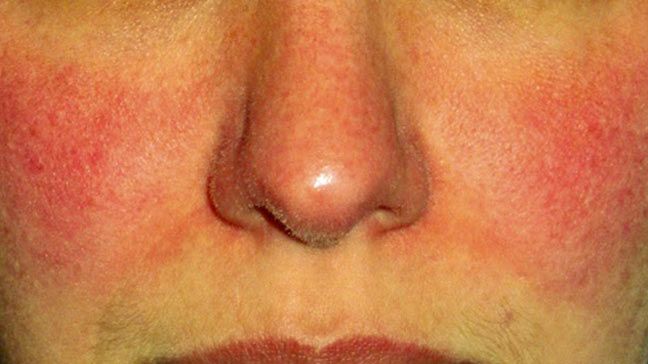
What it is
Rosacea is a skin condition marked by facial redness that looks like blushing or flushing. Experts don’t know exactly what causes it, but potential causes include gut bacteria, hereditary factors, and the immune system.
Symptoms
Rosacea usually causes a red rash around the nose, cheeks, or chin. The affected skin might be thickened or swollen, have lots of visible blood vessels, and be prone to acne-like breakouts.
How to treat it
There’s no cure for rosacea, but you can take steps to manage your symptoms.
Try to figure out what triggers your flare-ups and steer clear as much as possible. And try to minimize your sun exposure by wearing sunscreen every day, avoiding midday sun, and wearing a wide-brimmed hat. OTC remedies may also help with symptoms such as dryness.
9. Plaque psoriasis
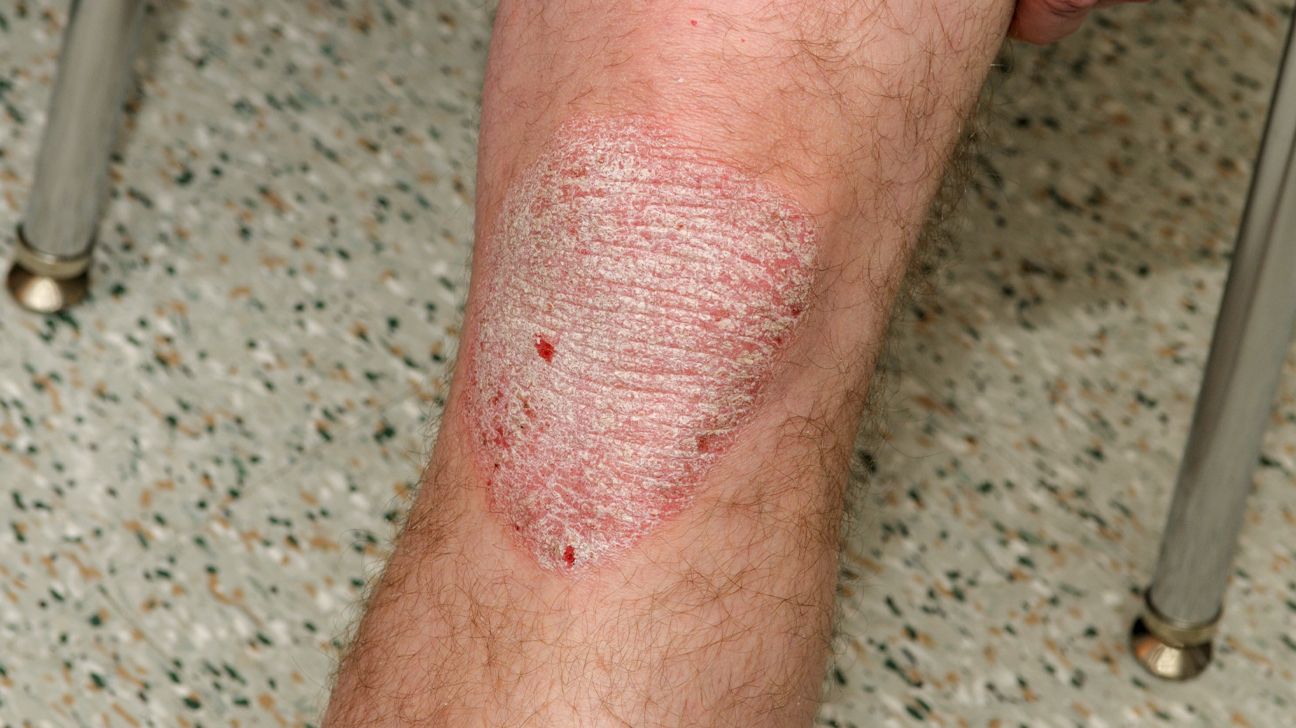
Martin Shields / Alamy Stock Photo
What it is
Psoriasis is an immune system condition that causes skin cells to grow and build up too quickly. It’s marked by thick, red plaques that are sometimes itchy and, in plaque psoriasis, have thick, silvery scales.
The patches can show up anywhere, but they’re especially common on the elbows, knees, scalp, lower back, and face.
Psoriasis patches tend to be thick and red with silvery scales and are often itchy or uncomfortable. Some people with psoriasis also have swelling or achiness in their joints. Often, specific triggers can cause symptoms to flare up.
How to treat it
There’s no cure for psoriasis, but there are ways to keep the inflammation and rough patches in check.
Depending on the severity of your psoriasis, your doctor might recommend topical ointments or creams, oral medications, or injections. Light therapy, which uses UV light to kill overactive cells, is another option.
10. Ringworm
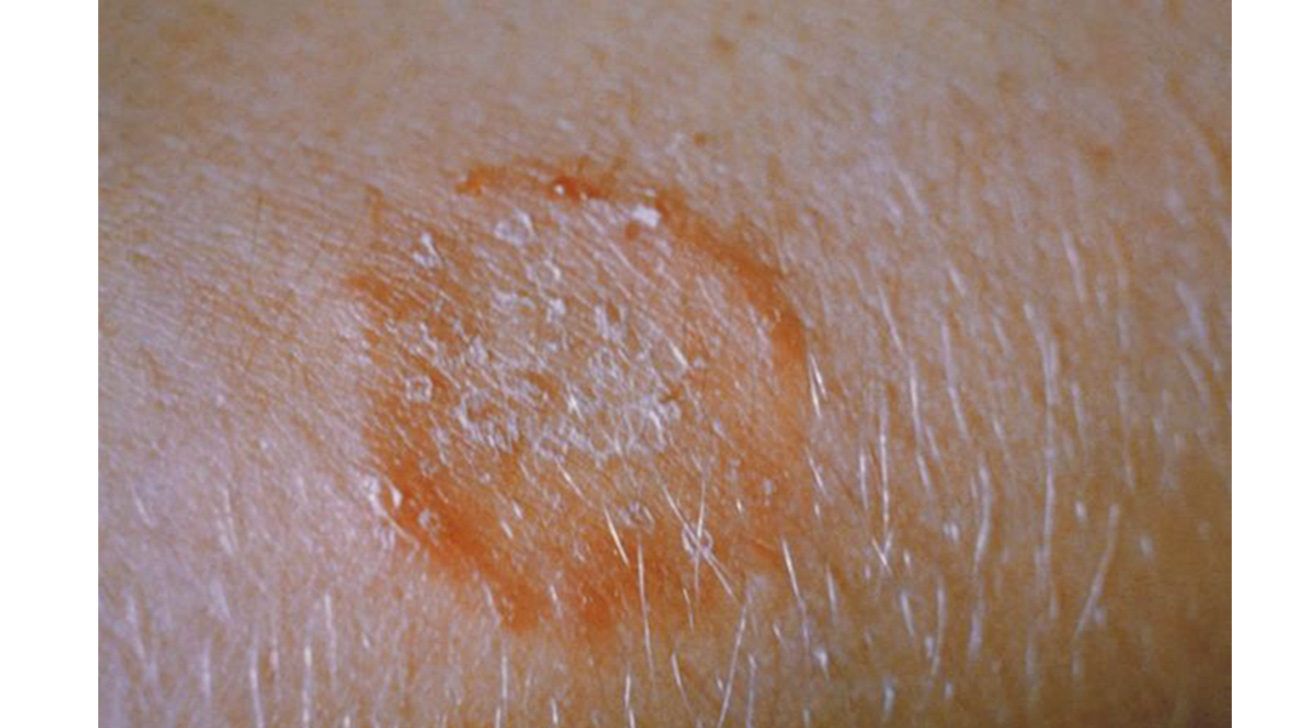
What it is
Ringworm is a common skin infection marked by a red, ring-shaped rash. Despite the name, there’s no actual worm involved — it’s caused by a fungus.
Symptoms
Ringworm rashes tend to be red and round, with a raised, wavy border and a clearing in the middle.
They can be very itchy or scaly and can form anywhere on the body, although they can look different depending on the area affected.
How to treat it
Start by contacting a doctor. They may prescribe an antifungal cream, ointment, gel, or spray to fight the infection.
You’ll also need to take steps to stamp out the infection at home: washing your bedding and clothes daily, drying your skin thoroughly after bathing, and wearing loose clothing.
11. Scarlet fever
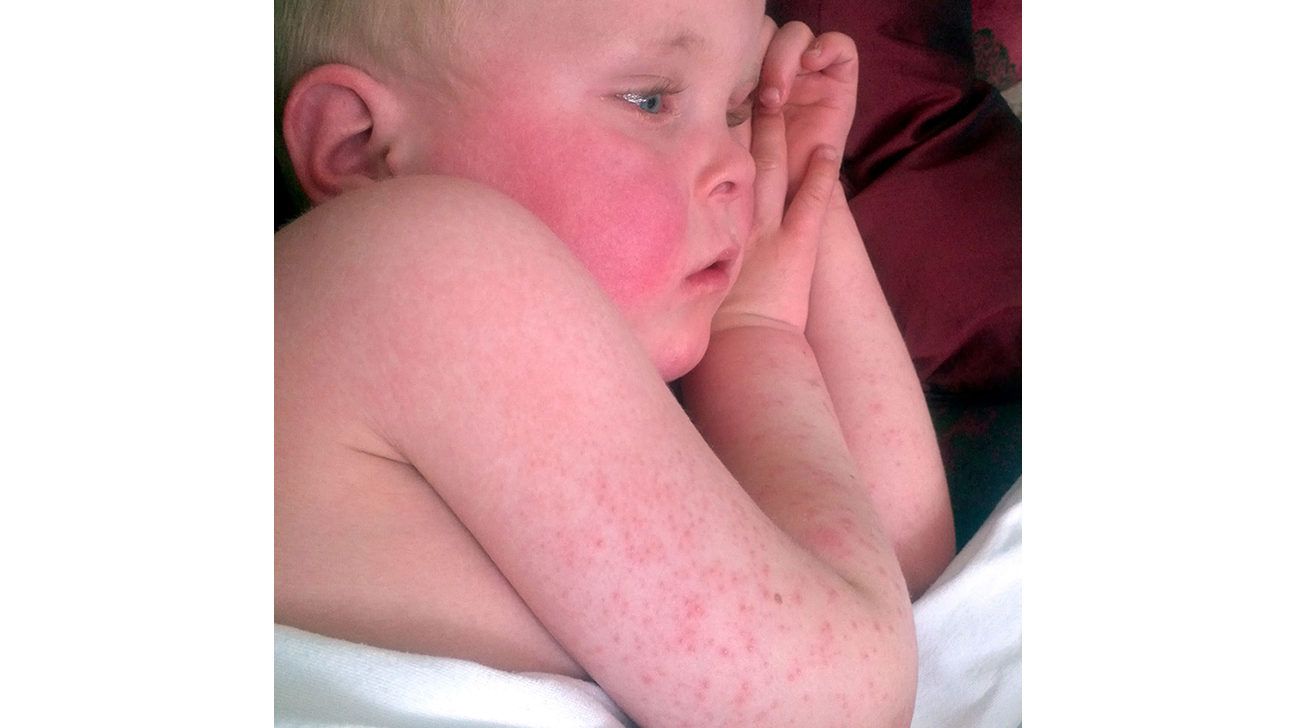
What it is
Scarlet fever is a bacterial infection that causes a bright red rash over most of your body. It can happen at any age, but kids ages 5 to 15 are most likely to be affected. It’s caused by the same bacteria as strep throat.
Symptoms
A scarlet fever rash looks a lot like dry sunburn that spreads all over your body. It can cause your face to look flushed and make your tongue look red and bumpy.
The rash is usually accompanied by a high fever and a very sore throat.
How to treat it
If you think you or your child has scarlet fever, call a doctor. You’ll need an exam to confirm the diagnosis and antibiotics to treat the infection.
Skin redness can be a sign of a mild problem that will clear up on its own, like a mild sunburn or a mosquito bite. But it can also signal a serious infection or a skin disease, so pay attention to your specific symptoms.
You should contact a doctor if:
- the redness doesn’t get better after a week or so of at-home treatment, or it gets worse
- you also have joint pain, fever, or a sore throat
- you have streaks of redness, or the red area is very tender or swollen
- you think you may have been bitten by a tick
- you’re unsure what caused your redness
In extreme cases, skin redness can warrant emergency medical attention. Call 911 right away for:
- burns that seem serious or are larger than twice the size of your palm
- trouble breathing
- extreme pain
- redness that’s near your eyes or affecting your vision
- loss of consciousness
Mild skin redness can often be managed at home. The best treatment depends on what’s causing your rash.
You can likely find relief by:
- avoiding irritants or allergens that you think might have triggered the rash
- cleaning the area with a gentle cleanser and warm water
- using fragrance-free topical ointments or creams like calamine lotion, aloe vera gel, or petroleum jelly
- taking antihistamines to ease itching or OTC pain relievers to reduce pain and inflammation
- being gentle with your skin, including patting it dry (instead of rubbing) after bathing or showering, and not scratching
Keeping skin redness and irritation at bay depends on the specific condition you’re trying to avoid. You can minimize your chances of problems like contact dermatitis or sunburn by avoiding irritants or allergens and using sun protection.
But in other cases, redness happens accidentally and can be tough to avoid. If you have a chronic condition that causes redness, your doctor can help you come up with a plan to manage your symptoms.
The best rule to live by? Monitor your symptoms and keep your doc in the loop!


